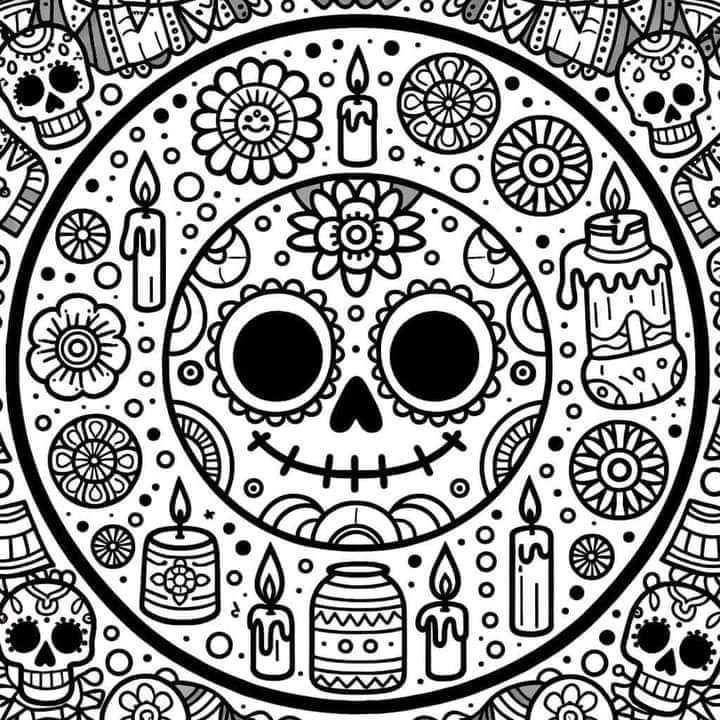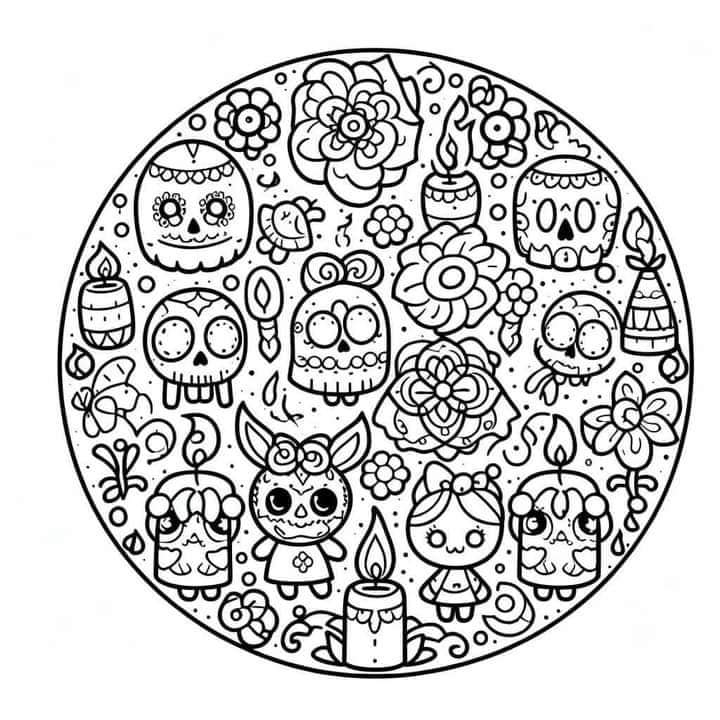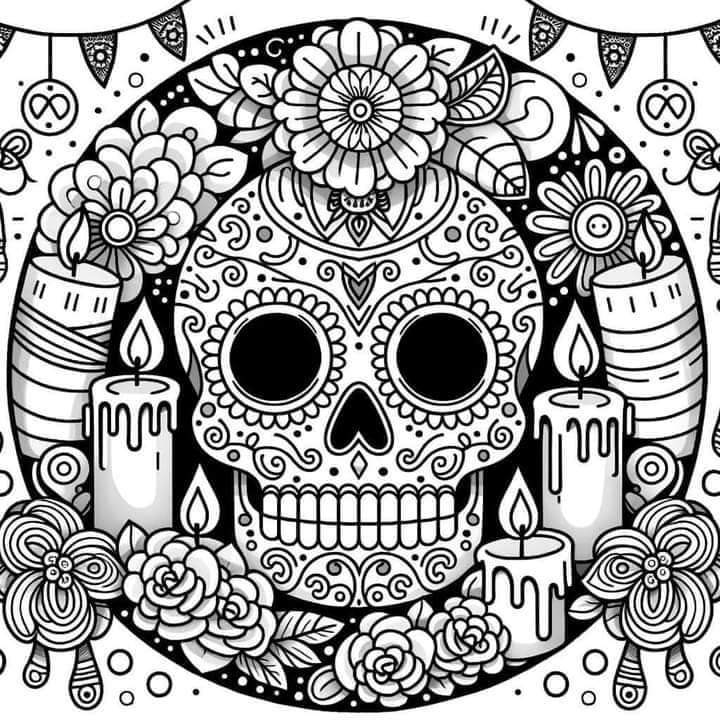Thursday, October 26, 2023
Elements of altar od the dead
An ofrenda, or Day of the Dead altar, is a traditional Mexican and Central American centerpiece created to honor and remember deceased loved ones during the Dia de los Muertos (Day of the Dead) celebration. This beautifully crafted display typically consists of several key elements:
1. **Altar Structure**: The central focus of the ofrenda is the altar itself. It can be a simple tabletop arrangement or a more elaborate multi-tiered structure. Altars are often covered with vibrant, colorful papel picado (cut-paper decorations) or fabric.
2. **Marigolds (Cempasúchil)**: Bright orange marigold flowers are placed throughout the altar. They are believed to attract the spirits of the deceased with their vibrant color and strong scent.
3. **Candles (Veladoras)**: Candles represent the light that guides the spirits back to the living world. They come in various shapes and sizes, with many adorned with religious imagery.
4. **Incense (Copal)**: Copal incense is burned to purify the air and create a pleasant aroma. The rising smoke is thought to carry prayers and messages to the spirits.
5. **Calaveras (Sugar Skulls)**: Colorful sugar skulls, often personalized with the names of the deceased, are a symbol of the departed and can be both decorative and edible.
6. **Favorite Foods and Drinks**: The ofrenda includes the favorite foods and drinks of the deceased, such as tamales, mole, pan de muerto (bread of the dead), and atole, as well as the deceased's preferred alcoholic beverages.
7. **Water**: A bowl of water is provided to quench the thirst of the spirits after their long journey from the afterlife.
8. **Salt**: Salt, often in the form of a cross, represents purification and preservation. It is used to purify the spirits and keep them safe during their visit.
9. **Photographs and Personal Belongings**: Pictures of the deceased and their personal items are displayed on the altar to help the spirits recognize and connect with their loved ones.
10. **Papel Picado**: Colorful, intricately cut paper decorations, often featuring skeletal figures, add a festive and symbolic touch to the altar.
11. **Religious Symbols**: Many ofrendas include religious symbols such as crucifixes, rosaries, and images of saints to reflect the spiritual beliefs of the deceased.
12. **Calacas and Calaveras**: These are figurines or representations of skeletons and skulls, often dressed in festive attire, symbolizing the cycle of life and death.
13. **Pan de Muerto**: This sweet bread, adorned with bone-shaped decorations, is a traditional Day of the Dead treat and a crucial element of the ofrenda.
14. **Offerings for Children and Adults**: In some regions, two altars are set up—one for deceased adults and one for deceased children. The children's ofrenda often includes toys and candies.
15. **Papel de China (Chinese paper)**: White tissue paper, often used to decorate the altar, symbolizes the wind and the fragile nature of life.
Each of these elements contributes to the ofrenda's significance and serves as a way for families to remember and celebrate the lives of their departed loved ones during the Day of the Dead festivities.
Subscribe to:
Posts (Atom)
Popular Posts
-
Chavo del ocho coloring pages | Coloring pages chavo
-
Bubblegum coloring pages Coloring pages, printable coloring sheets, coloring sheets Bublegum
-
Coloring images of Egypt can be a relaxing and educational activity that offers several benefits. Here are some of them: 1. Relaxation and ...
-
Remember Only in Coloring Book 4 Kids will find the best coloring pages, printables pages, coloring book, puzzle, crafts, coloring shee...
-
Coloring mandalas that depict the Mexican Revolution is not just an artistic endeavor, but a journey into the heart of Mexico’s history. M...











.jpeg)
















